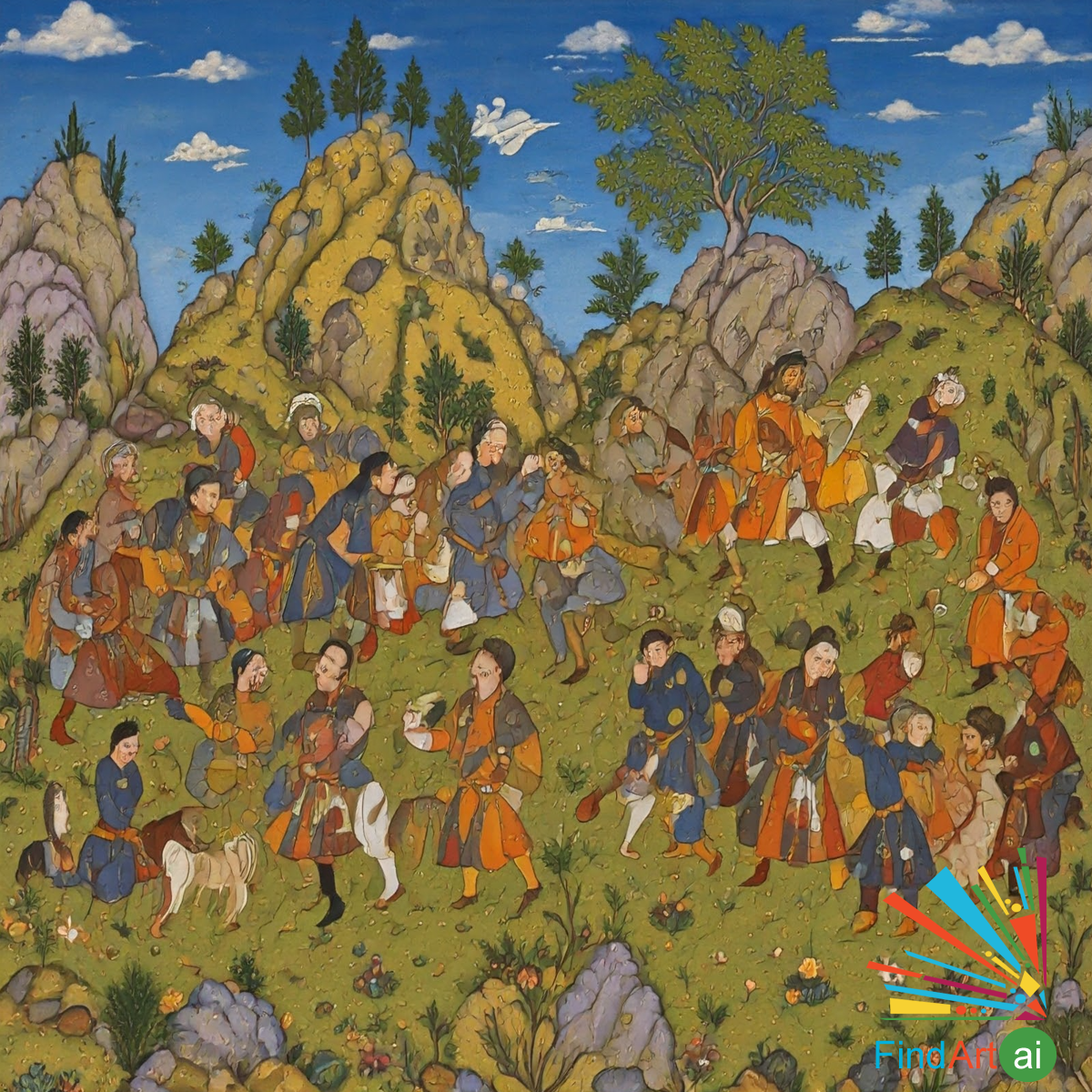Persian Miniature Painting
Persian Miniature Painting is a traditional art form that originated in Persia (modern-day Iran) and flourished from the 13th to the 18th centuries. Renowned for its intricate detail and vibrant colors, this style embodies the rich cultural heritage and artistic traditions of Iran.
Key Characteristics of Persian Miniature Painting
- Intricate Detail
- Persian miniatures are characterized by meticulous attention to detail, with artists using fine brushes to create highly detailed figures, patterns, and backgrounds. This precision is crucial for capturing the delicate features of faces, garments, and landscapes.
- Vibrant Colors
- The color palette is rich and diverse, utilizing natural pigments derived from minerals, plants, and other materials. Gold leaf is often used to enhance the richness and luminosity of the paintings.
- Elaborate Composition
- Miniatures often feature complex compositions that blend multiple elements, such as figures, flora, fauna, and architectural details. These elements are arranged harmoniously to create a cohesive scene.
- Themes and Subjects
- Common themes include historical events, mythology, courtly life, and romantic narratives. Many paintings illustrate stories from Persian literature, particularly from works like the Shahnameh (Book of Kings) and Khosrow and Shirin.
- Example: Illustrations of epic battles, court scenes, and tales of love are frequently depicted.
- Symbolism
- Persian miniatures are rich in symbolism, with colors, motifs, and figures representing various ideas, emotions, and cultural values. For instance, certain flowers or animals may symbolize love, power, or spirituality.
- Influence of Calligraphy
- Calligraphy often accompanies miniature paintings, with poetic verses or inscriptions integrated into the artwork. This combination of visual and textual elements enriches the narrative and aesthetic quality of the piece.
- Use of Perspective
- While traditional Western perspective is not typically employed, Persian miniatures use a form of aerial perspective, where background elements are rendered smaller and less detailed to create a sense of depth.
Common Themes in Persian Miniature Painting
- Epic Tales: Many works depict stories from Persian literature, illustrating heroic deeds and moral lessons.
- Court Life: Scenes of royal courts, festivities, and social gatherings highlight the opulence and culture of Persian nobility.
- Nature and Beauty: Floral patterns, birds, and landscapes are often included, symbolizing the beauty of nature and the transience of life.
- Spirituality and Mysticism: Some miniatures explore themes of spirituality, incorporating Sufi concepts and metaphysical ideas.
Famous Persian Miniature Artists and Periods
- Behzad
- One of the most celebrated Persian miniature painters, known for his intricate compositions and masterful use of color during the Timurid period.
- Shah Abbas I Era
- The Safavid period (16th to 18th centuries) saw a flourishing of miniature painting, with the royal court commissioning many works that showcased both historical and mythological themes.
- Kamal al-Din Bihzad
- A prominent figure in Persian miniature painting, Bihzad’s style combined realism with decorative elements, influencing generations of artists.
Persian Miniature Painting is a refined art form that reflects the rich cultural, historical, and literary heritage of Iran. Through its intricate details, vibrant colors, and symbolic narratives, this style captures the essence of Persian identity and continues to inspire artists and art lovers around the world. Its legacy is not only a testament to artistic skill but also to the enduring power of storytelling in visual art.
Persian Miniature Paintings with Epic Tales Theme
Persian Miniature Paintings with the Epic Tales theme visually narrate the grand, heroic, and often ...

